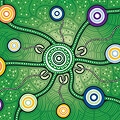Understanding childhood interstitial lung disease
chILD is a broad term for a large group of rare lung diseases that can affect infants, children and adolescents. Most cases of chILD occur in infants, though chILD can also occur in children and teenagers. “Interstitial” refers to the tissue and space around the air sacs of the lung where oxygen is absorbed into the blood.
There are approximately 200 different diseases that sit under chILD, each of which has its own name1. In this group of diseases there is often a thickening of the framework of the lung, the interstitium, although other structures of the lungs (and in some cases other systems within the body) can be involved. Due to this thickening, it is harder for the oxygen to cross into the bloodstream and so less oxygen is available for the body. Children often have a fast breathing rate and may have difficulty putting on weight.
Types of chILD
There are many different types of chILD which can be grouped into distinct categories. Some types of chILD have a primary cause and typically appear in infancy. Other types of chILD are categorised as secondary as the changes in the lung tissue are due to another cause. There are many similarities amongst the different types of chILD and symptoms may be very similar. It is often difficult to make a specific diagnosis without more extensive testing.
Occurring mainly in infancy
- Developmental disorders (e.g. alveolar capillary dysplasia)
- Specific conditions of unknown cause (e.g. Neuroendocrine Cell Hyperplasia of Infancy (NEHI))
- Surfactant Dysfunction (e.g. alveolar proteinosis)
Affect all age groups
- Disorders of systemic disease (e.g. rheumatological diseases)
- Disorders of the immunocompromised (e.g. STING/SAVI)
- Disorders masquerading as chILD (e.g. Pulmonary Arterial Hypertension)
- Unknown (i.e. pulmonary biopsy tissue that cannot be classified)
Different terms
In addition to chILD, other terms for the condition may be used:
- Children’s Interstitial Lung Disease
- Interstitial Lung Disease in children
- chILD syndrome
- Children’s diffuse lung disease
- Diffuse Parenchymal Lung Disease (DPLD)
These alternate terms can be confusing, but all refer to the same group of conditions or conditions where there is overlap with chILD, such as DPLD.
How lungs work
Understanding how the lungs work is helpful to understanding chILD. The lungs absorb oxygen from the air you breathe in and transfer it into the bloodstream, so it can get to every part of your body. Your body then uses the oxygen to help your cells work and produces the waste gas, carbon dioxide. Your lungs then expel the waste gas when you breathe out.
The lungs are part of the respiratory system. The respiratory system is also made up of other organs and tissues that assist in the breathing process such as the airways, alveoli (air sacs), capillaries (tiny blood vessels), and the muscles that enable breathing.
Interstitium
In between the surface of the alveoli and the capillaries is a very thin layer of connective tissue. This tissue is known as the interstitium. Oxygen and carbon dioxide must pass through the interstitium to enter and exit the capillaries surrounding the alveoli. The interstitium also provides a framework to maintain the shape of the lungs and is often described as the “scaffolding” of the lung. In healthy lungs this tissue is elastic and springy.
Changes to the interstitium, like swelling, inflammation or scarring can reduce the ability of the lungs to absorb oxygen and/or release carbon dioxide.
Interstitial Lung Disease (ILD)
Interstitial Lung Disease is characterised by inflammation and scarring (fibrosis) of the lungs. The interstitium becomes thicker, making it difficult for oxygen to cross over into the blood stream, which reduces the ability of the lungs to deliver oxygen to the body.
This thickening of the interstitium also increases the distance between the wall of the alveoli and the capillaries, further impairing oxygen transfer between the airways and the blood. Additionally, the interstitial thickening results in the lungs becoming stiffer, making it harder to breathe. Children with chILD may inhale and exhale smaller volumes of air, and then must breathe faster and harder to make up for this.
Interstitial Lung Disease can distort the shape of the lungs, making them smaller and stiffer, also resulting in increased breathlessness.
Although Interstitial Lung Diseases often damage the interstitium, it is not the only part of the respiratory system that may be affected. Other structures of the lung (such as the smaller airways, alveoli or blood vessels) are often also involved or, in some cases, other organs of the body.
Resources
Chronic conditions and schooling
This fact sheet from Lung Foundation Australia is a valuable resource for
Treatment of Childhood Interstitial Lung Disease
chILD refers to a group of rare lung disorders that impair oxygen
Symptoms of Childhood Interstitial Lung Disease
Childhood Interstitial Lung Disease (chILD) presents with a wide range of symptoms
Equipment used in Childhood Interstitial Lung Disease
chILD refers to a group of rare lung disorders that impair oxygen
Dealing with a diagnosis of Childhood Interstitial Lung Disease (chILD)
Childhood Interstitial Lung Disease (chILD) is a rare and complex condition that
Children’s Interstitial Lung Disease (chILD)
The Children’s Interstitial Lung Disease (chILD) Factsheet is a vital resource for
References
1 chILD-EU, 2015, Living with chILD: An Information Booklet for Parents and Relatives of affected Children is Available: www.klinikum.uni-muenchen.de/Child-EU/download/en/child-register/services/booklet/Living-with-chILD-_UK-Version_-FINAL.pdf
Was this page helpful?
Good job! Please give your positive feedback
How could we improve this post? Please Help us.



